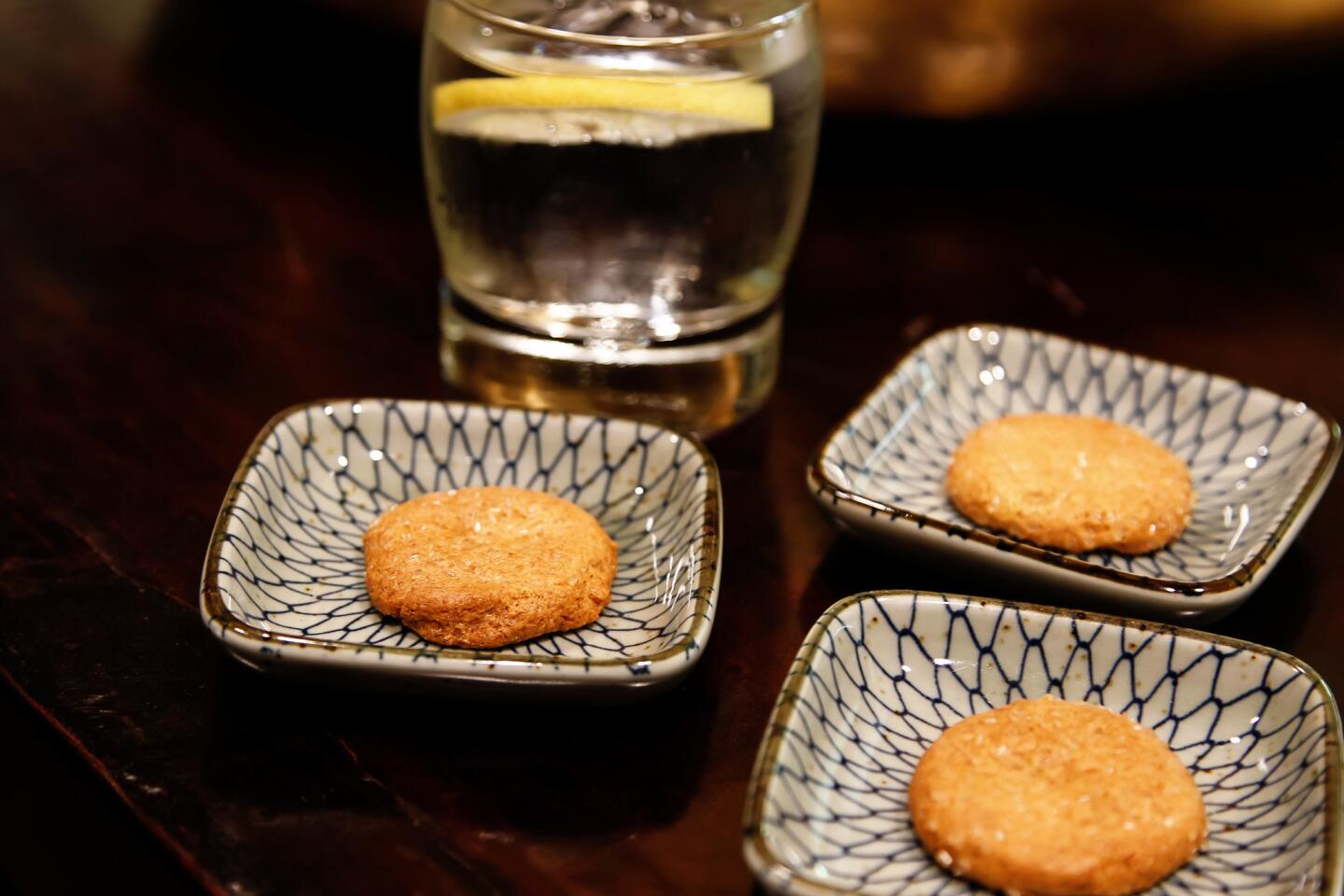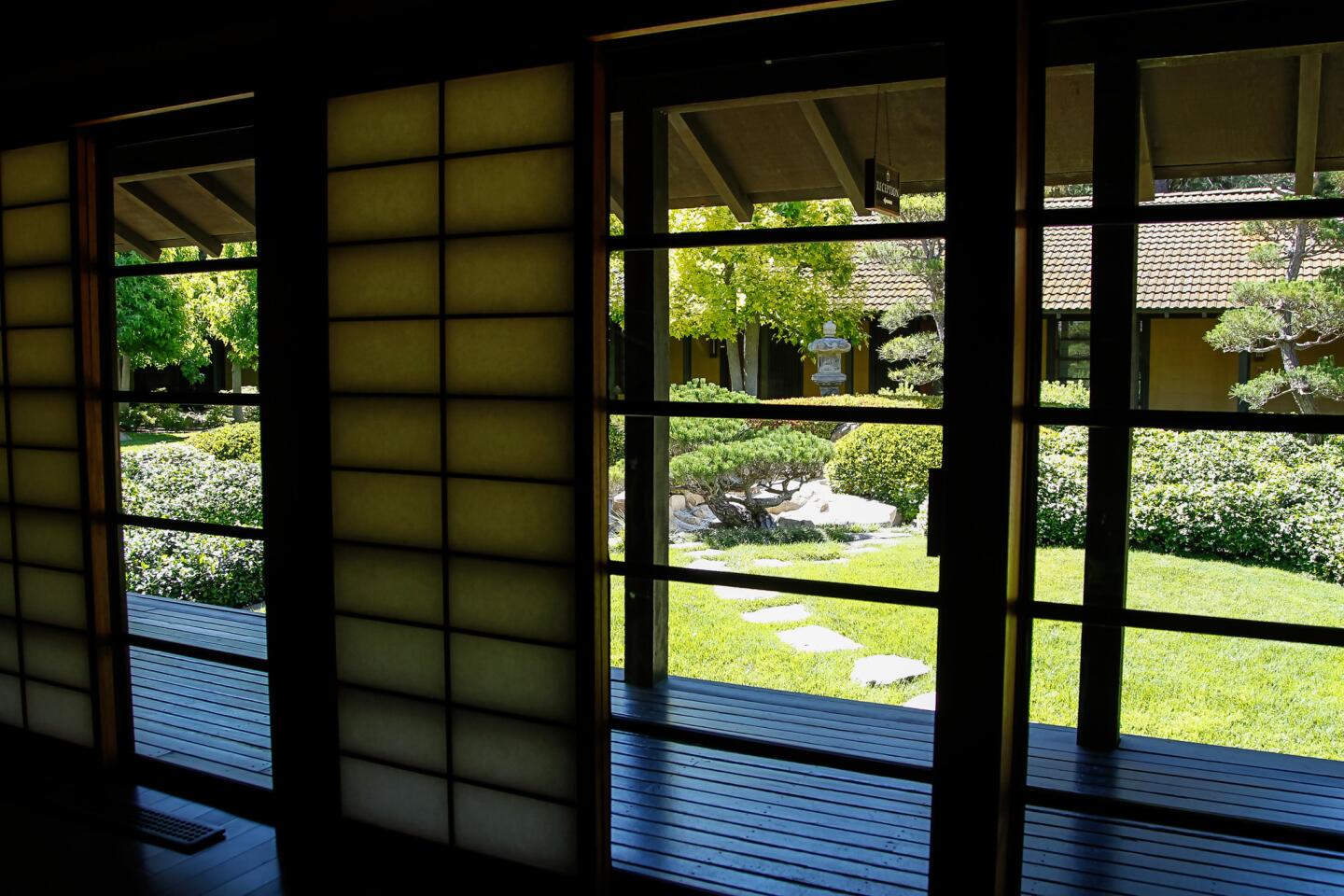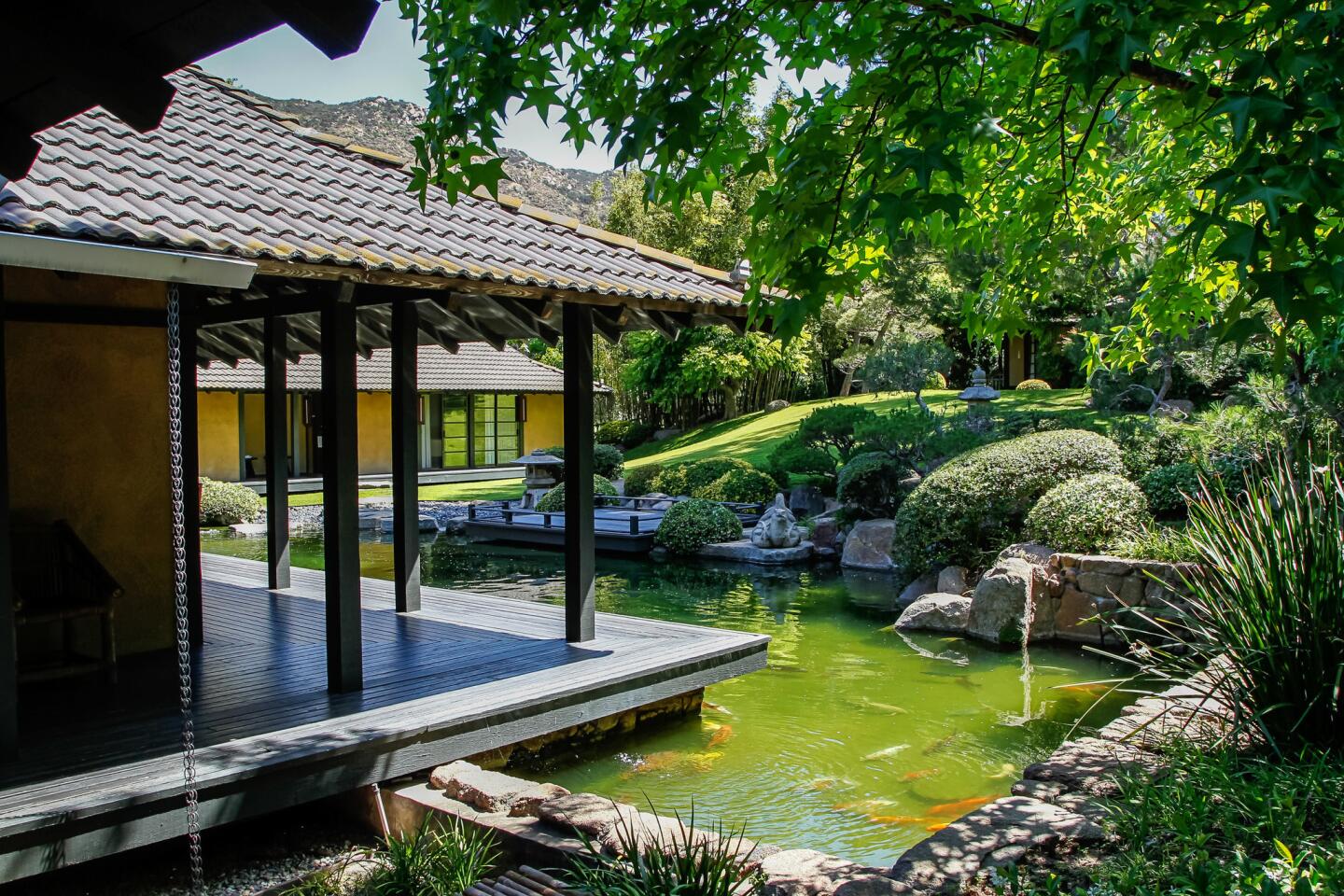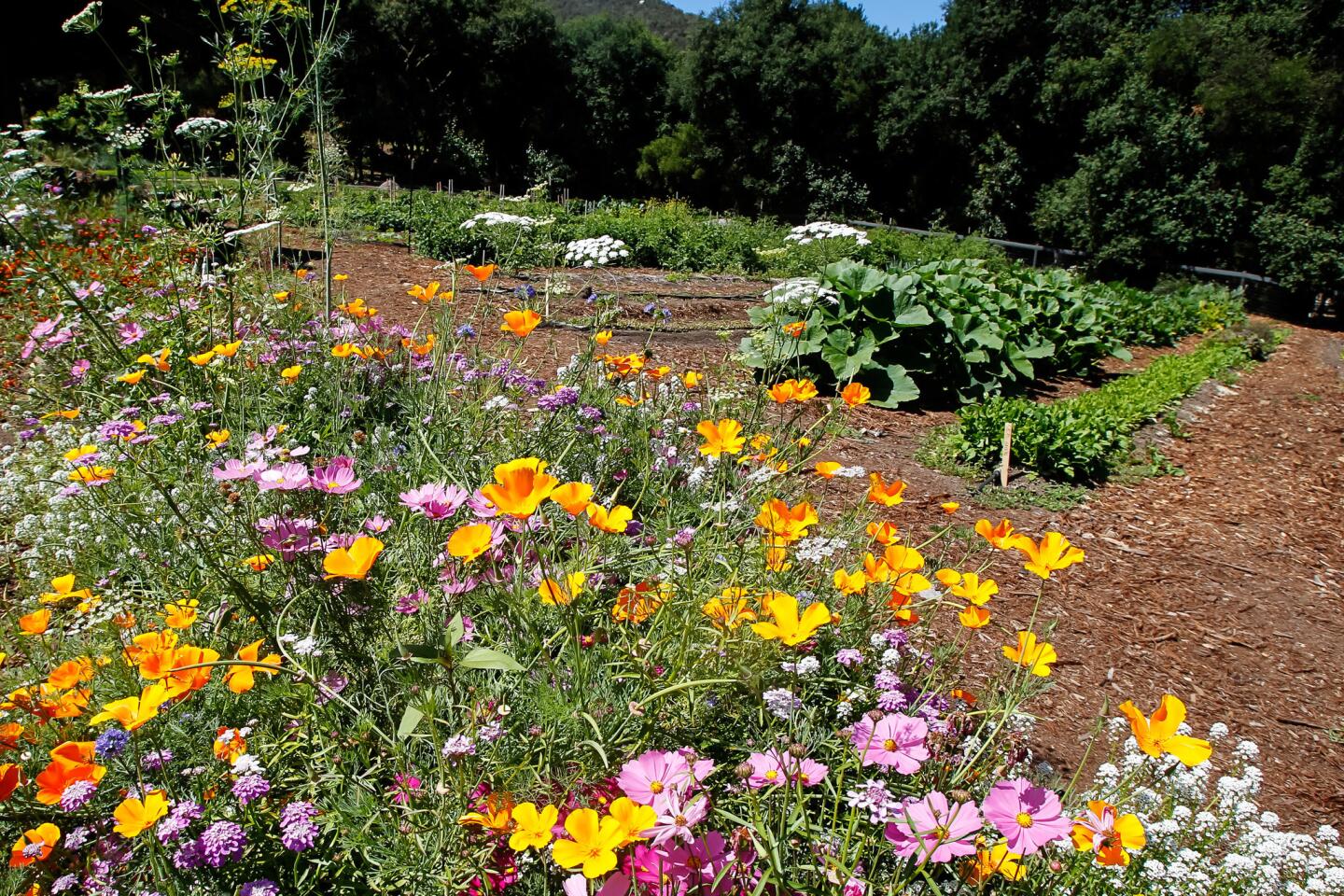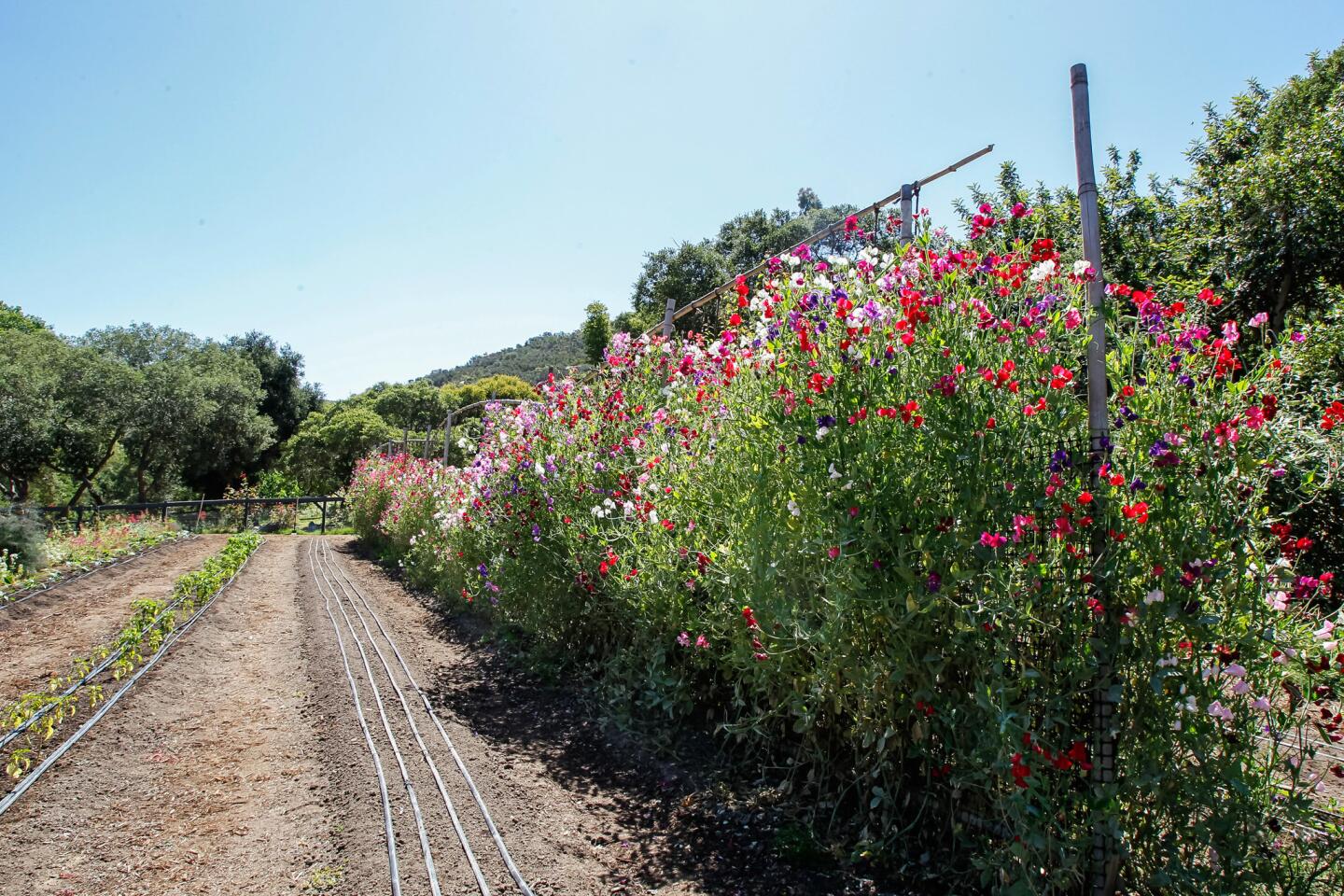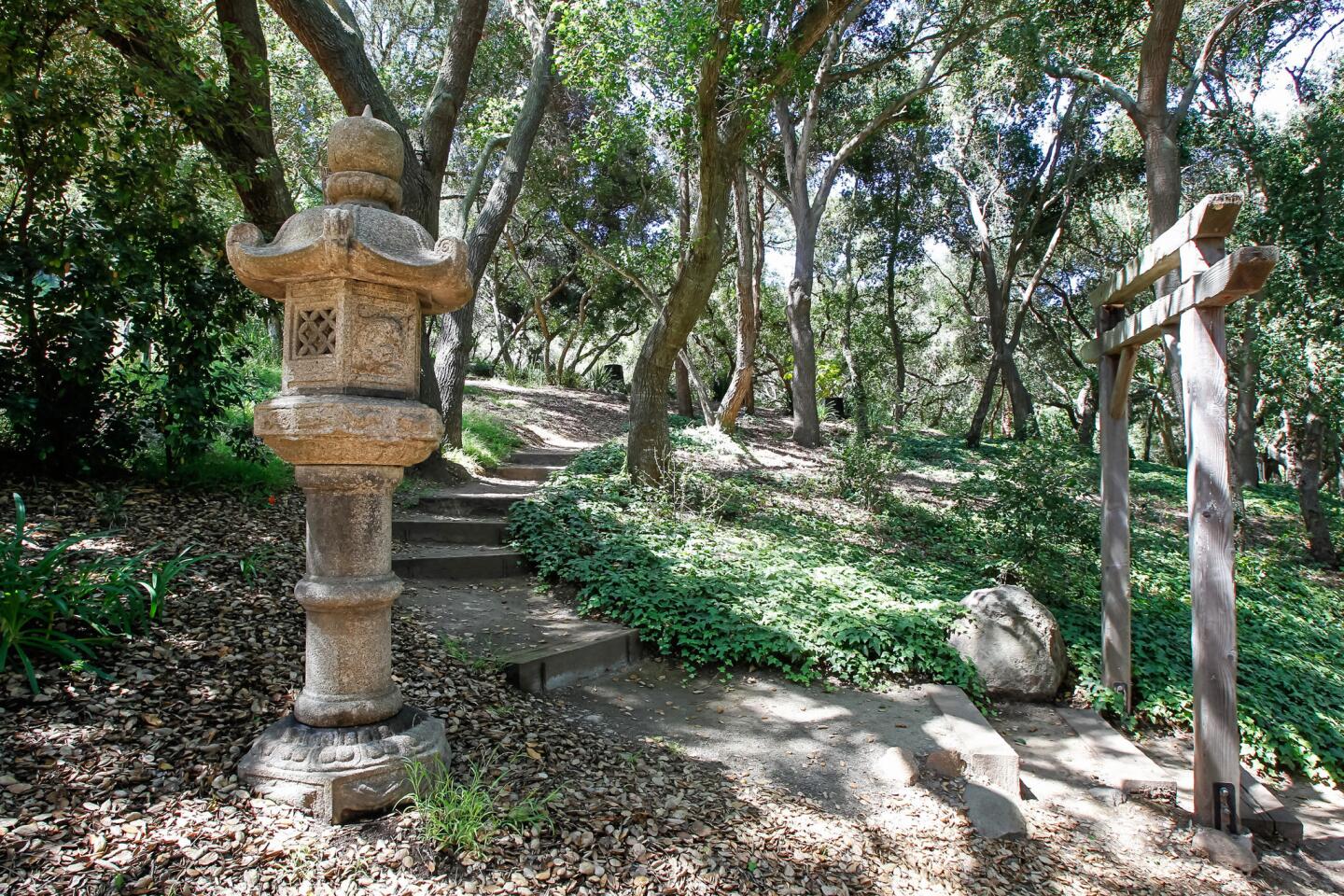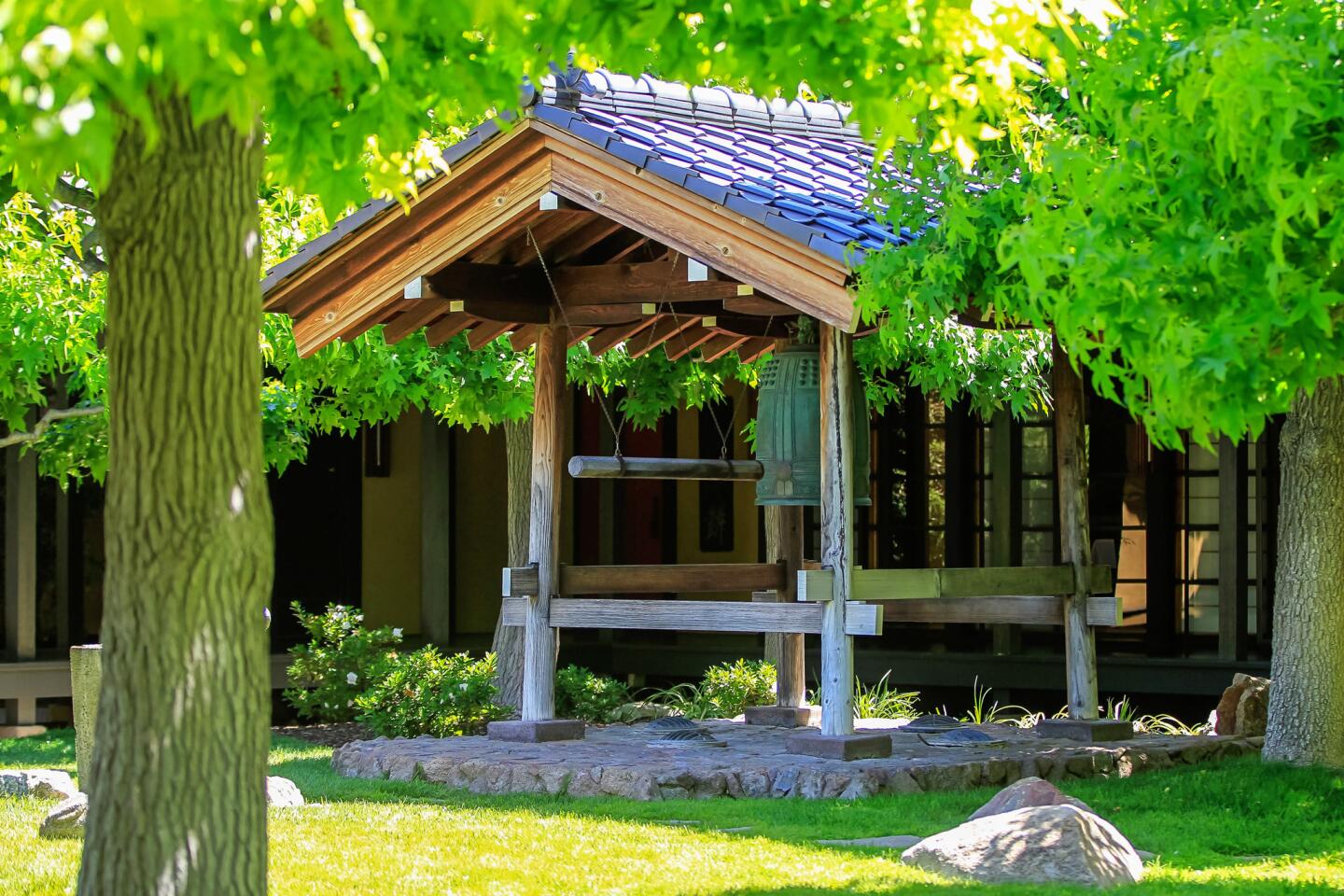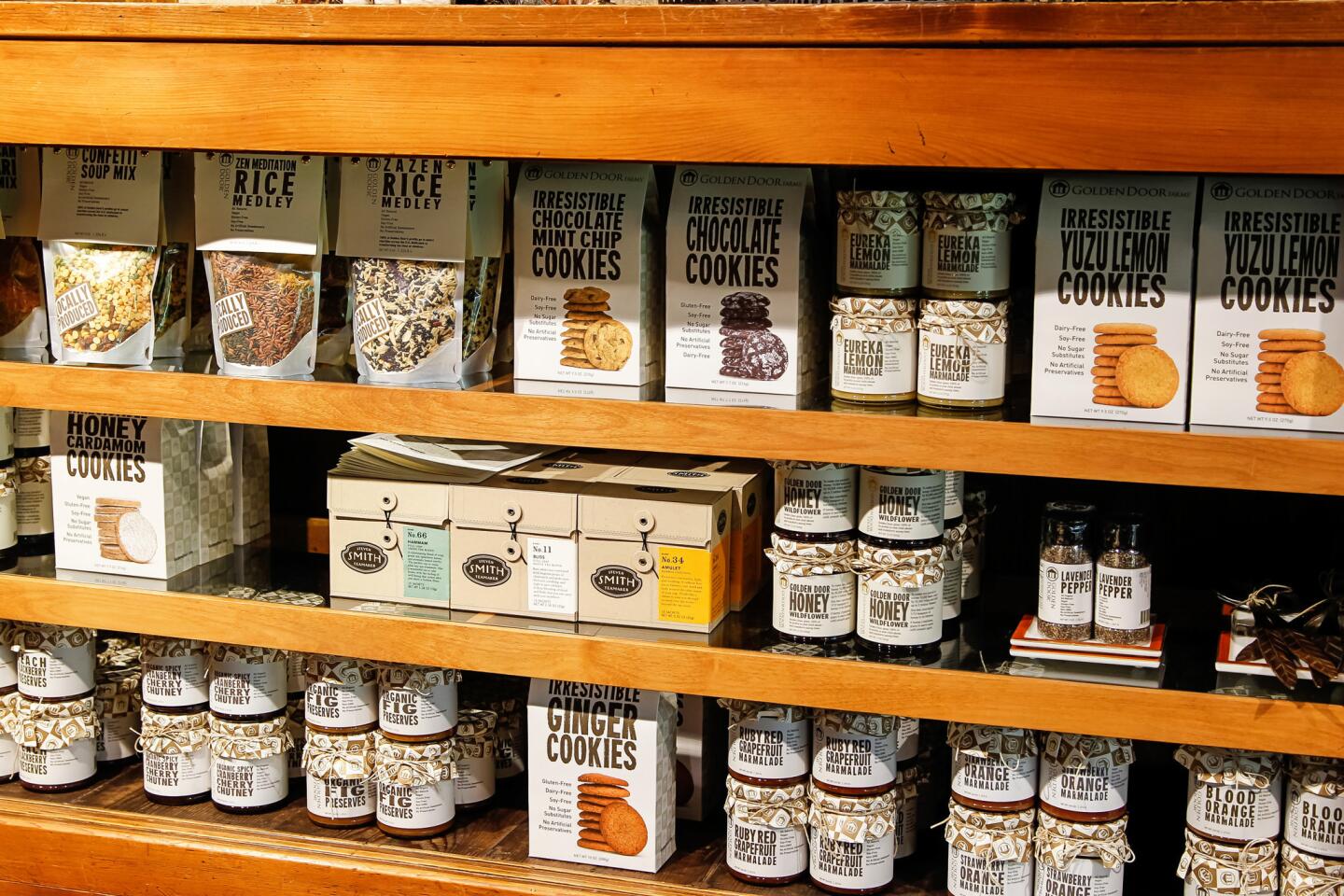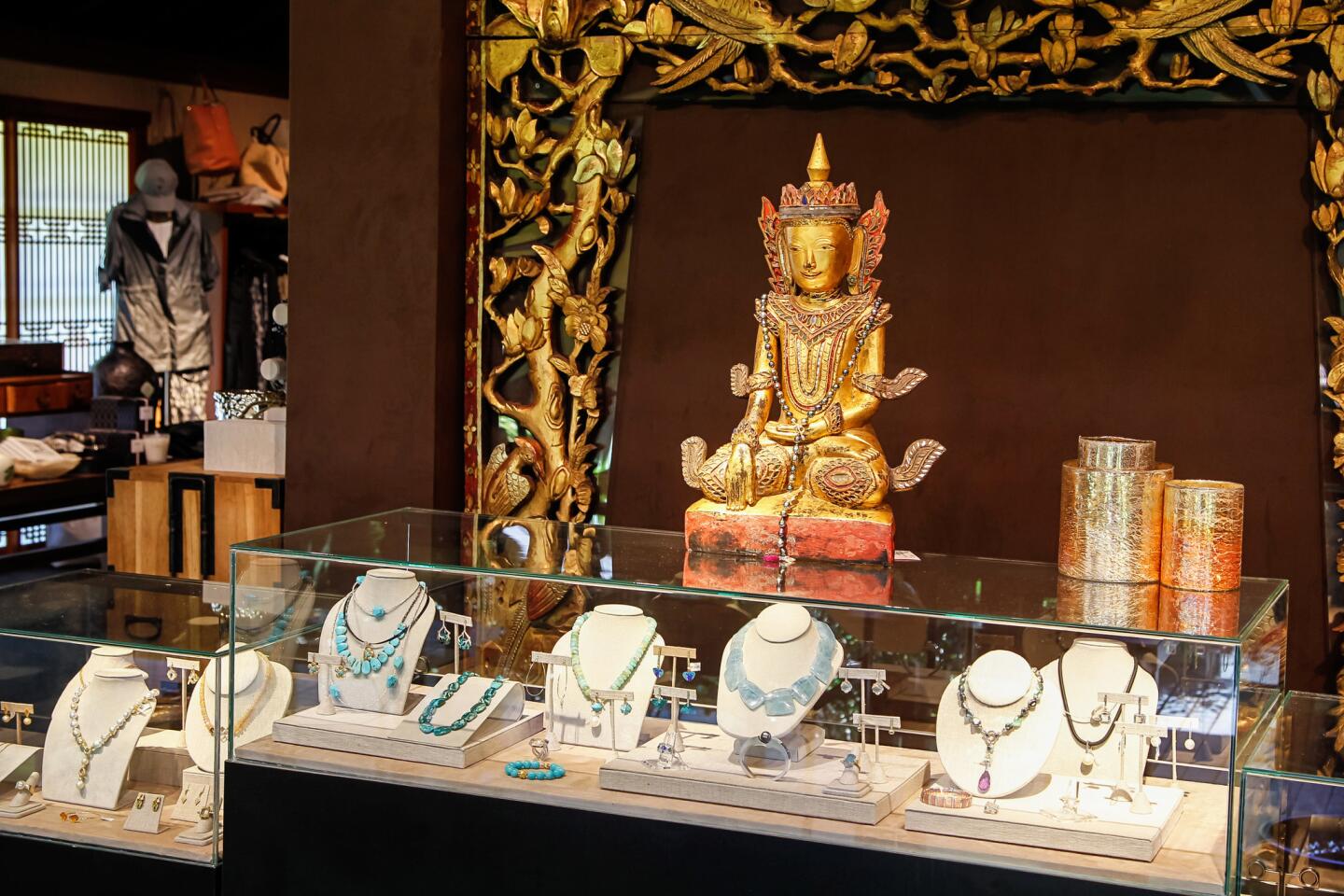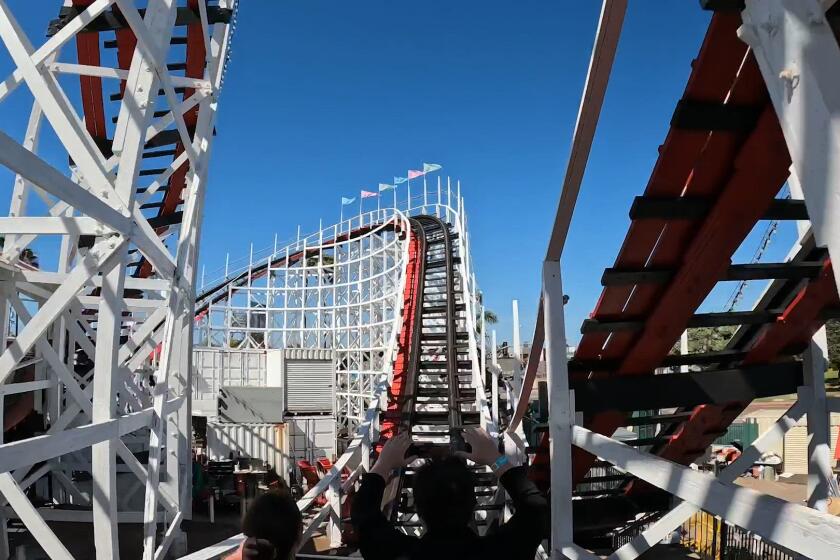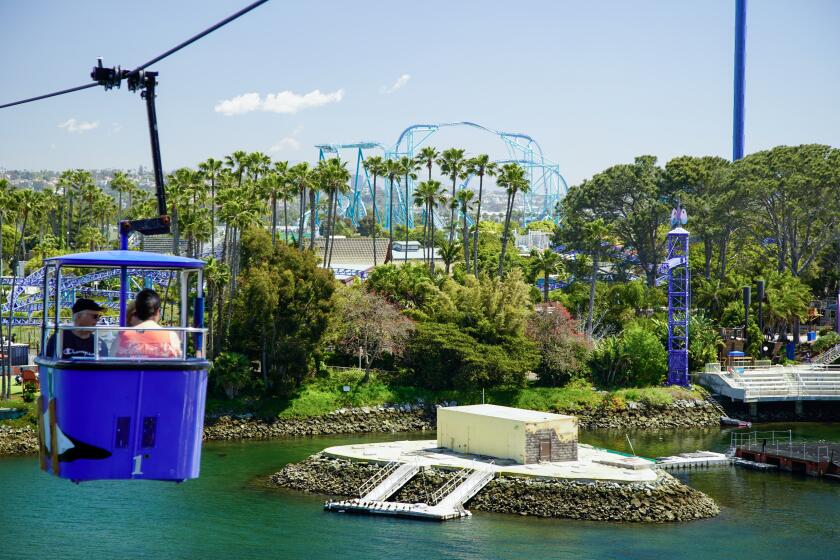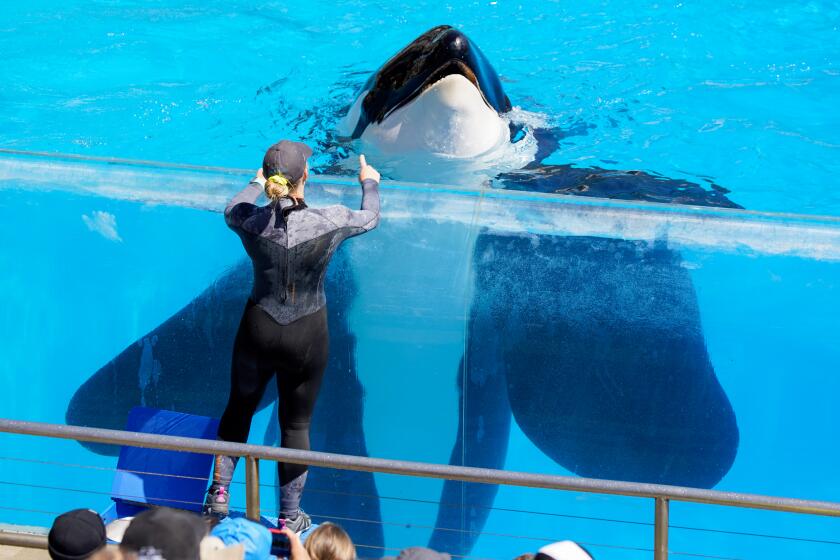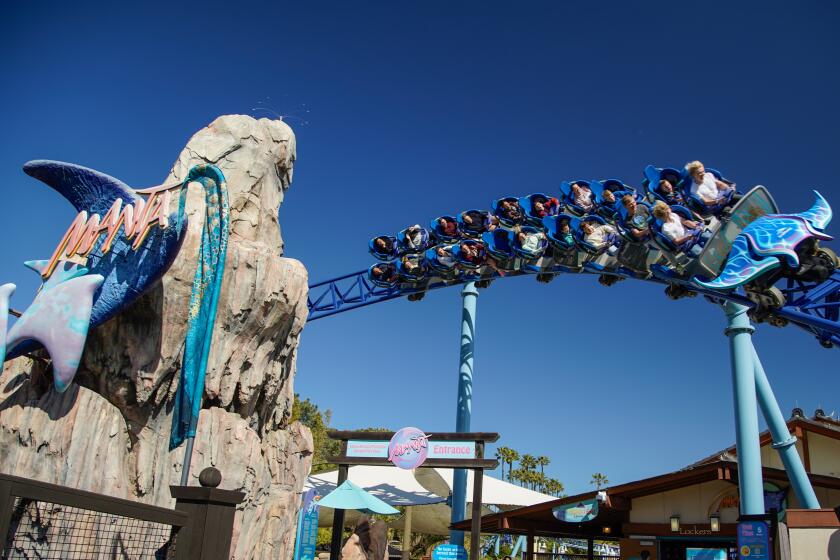Destination spas offer luxury to the masses
An air of zen tranquility and sumptuous seclusion greets visitors to the Golden Door, the 600-acre destination spa in San Marcos.
Which is probably how is should be at a world-renowned luxury resort, where a week’s stay costs between $9,000 and $9,600.
Birds chirp as if on cue as you pass through the famed gold entryway that ushers you over a wooden bridge and into a hushed expanse of meticulous Japanese gardens, koi ponds, citrus groves, organic vegetable farms and ancient oaks.
Guests — no more than 40 at a time — from the upper echelons of celebrity, industry and royalty come to be pampered with one-on-one training, daily in-room massages and customized cuisine.
There was a time when the Golden Door, along with the San Diego area’s two other exclusive destination spas — Cal-a-Vie and Rancho La Puerta — were just that, exclusive. Today, however, all three are peeling back the curtain and offering, to varying degrees, small but significant slices of this rarefied world.
Wine drinkers can buy sauvignon blanc, merlot or a Bordeaux-style blend made from grapes grown on Cal-a-Vie’s lush Vista property. And San Diego residents can go antique shopping there, perhaps decorating their homes with the same European pieces that adorn the resort’s swanky Provençal-style accommodations.
Members of the public can spend an entire day unwinding at Rancho La Puerta, the legendary 3,000-acre rustic wellness retreat in Tecate, or even just grab a bite to eat at a new Mexican cafe adjacent to its organic farm and cooking school.
And tucked away in a corner of the Golden Door property not seen by guests are two non-descript buildings being used as commercial distribution centers. Earlier this year, the resort launched a major retail operation and began selling its beauty and artisan food products to the mass market on a massive scale — on HSN, formerly the Home Shopping Network.
Thousands of orders a day — for products ranging from Bamboo Face Scrub to Irresistible Ginger Cookies and Organic Fig Preserves — get processed at the distribution centers and shipped across the country. Locally, residents can also find Golden Door products at Whole Foods and Jimbo’s.
“We have migrated to a lifestyle brand,” said Kathy Van Ness, the resort’s general manager and chief operating officer.
Standing amid product-lined shelves and stacks of empty boxes about to be filled, Van Ness proudly points out that all the inventory is individually bar-coded for scanning and that the Golden Door is now “EDI compliant,” shorthand for the common data language e-companies use.
Sales, she said, have been “in the millions” since January. “We run like a real, full-scale retail operation.”
All three of the region’s destination spas draw between 10 percent to 30 percent of their clientele from the San Diego market. But their push to expose their brands to a new demographic is an outgrowth of increasing mainstream appeal of the high-end, boutique organic lifestyle, said Beth McGroarty, research director for the Global Wellness Institute (GWI), a Miami-based nonprofit, research and educational organization for the wellness industry.
“The interest in wellness is absolutely skyrocketing and that includes everything — food, fitness, products to beauty, especially beauty,” McGroarty said.
“Consumers are just obsessed with authentic, indigenous, unique, natural beauty products that have a halo over them. … Golden Door, Rancho La Puerta, people know the names of these places, they’re associated with the holistic lifestyle. They have a different valuation in the market.”
Resorts, she said, are smart to tap into that trend, with the wellness industry growing every year and U.S. spa facilities generating $18.7 billion in 2015, according to the “Global Wellness Economy Monitor,” a 2017 report by the GWI. The United States accounts for about a quarter, or 24 percent, of all global spa revenues.
“It’s psychotically huge and it’s a huge opportunity for a spa with a great brand to expand beyond the spa,” McGroarty said.
As potent as the economic sector is for spas, the average San Diegan usually only hears about Cal-a-Vie, the Golden Door and Rancho La Puerta when they inevitably score top rankings on prestigious travel and luxury magazine annual lists.
How they’re raising their profile locally is as individual as the resorts themselves. They all recently opened their doors to the U-T for a closer look.
Cal-a-Vie
The most traditionally luxurious of the three, Cal-a-Vie’s pristine 450-acre property has all the trappings of a charming countryside village in the south of France, complete with Mediterranean villas, a stone chapel and mill and hillsides covered with rosemary, lavender and grapevines.
“It’s really like staying on someone’s private estate,” said marketing director Lori Kennedy. “It’s Europe without the travel.”
Millions of dollars in stone work, tapestries, tiles, sculptures, paintings, wood carvings, fountains, furniture, pottery, lighting, mirrors, linens, even entire portions of centuries-old buildings, have been imported from France and Italy by owners Terri and John Havens.
The Houston couple — he’s in seismic data for oil exploration — had collected so many 17th and 18th century pieces, they opened an antique boutique for guests as well as non-guests.
Befitting the resplendent resort, its offerings to the public are limited — and come at a price. Shopping with antique manager Nancy Greene is by-appointment only and pieces range from $500 to $25,000.
“We have designers who come here and quite a few ladies from Rancho Santa Fe who like to shop here,” Kennedy said.
The Chateau Cal-a-Vie wines are similarly not aimed at the Tuesday night tippler. Polished and sophisticated, the three varieties range from $79 for the sauvignon blanc to $159 for the merlot. The wines, along with skincare products made from vineyard grape seeds and skins, are available on the spa’s website. Purchases of a case or more of wine can be picked up at the resort.
But that’s about all the access the public can get to Cal-a-Vie, which costs about $10,000 for a seven-night stay. There are no plans to open up the resort to day-trippers.
“That starts to be a challenge with only 32 rooms,” Kennedy said. “What makes Cal-a-Vie Cal-a-Vie, what keeps it exclusive, is that we don’t do that,” Kennedy said.
Rancho La Puerta
The grand dame of destination resorts, “the Ranch” eschews many of the trappings of the luxe life in favor of providing a more mindful or spiritual experience.
The unassuming resort was co-founded in 1940 by Deborah Szekely, the so-called Godmother of Wellness, who also opened the Golden Door in 1958.
At the lushly landscaped, sprawling property just south of the Tecate border crossing, there is an abundance — thousands of acres — of open space. Guests even board a shuttle to reach the cooking school, La Cocina Que Canta, from the main spa area.
Low key and pastoral, Rancho La Puerta is the only destination spa in the region that’s accessible to day visitors. A few years ago, it introduced “Saturdays at The Ranch,” a one-day getaway that includes round-trip transportation from San Diego, a full day of activities mixed with relaxation, a massage, several meals and a cooking class for $315, plus tax.
Roberto Arjona, chief executive of Rancho La Puerta, said it’s a way to introduce the world-famous resort to the general public here.
“While San Diego residents are a large part of our market, we felt we did not have enough presence in our backyard,” Arjona said.
“The Saturdays at the Ranch program is not meant to bring in significant revenue to the Ranch, but rather exposure, as an option for San Diegans to have a wellness resort a short drive away.”
Guests paying for a full-stay — which can run from $3,750 to $5,750 a week, not including spa treatments — experience little disruption from the visitors, Arjona said, because Saturday is check-in/check-out day. Extra staff is also on-hand “to ensure both our weeklong guests and Saturday at the Ranch guests are taken care of,” he said.
Even more attainable is the new El Cafecito restaurant, open to the public Wednesday through Sunday. Located at the organic farm next to the cooking school and headed by Rancho La Puerta executive chef Denise Roa, El Cafecito has menu that ranges from grilled veggies to spicy shrimp, beet salad to chicken chilaquiles, priced from $2.50 to $14. No reservations are necessary and farm tours can be requested.
Arjona said giving San Diegans a taste of the Rancho La Puerta experience has had an impact, with an estimated 10 percent of Saturday visitors turning around and booking weeklong stays.
Golden Door
HSN and the Golden Door would seem unlikely partners. After all, on the day the U-T visited the resort, an A-list actor and superstar athlete were there for a week of “men’s camp.”
Then there was Van Ness, the GM, talking about how 10,000 heirloom tomato plants were newly farmed in the garden and would be the source for a new line of Golden Door tomato sauce later this year (marinara and winter squash).
The apparent disconnect disappears, however, when Van Ness starts talking about how the mission of the resort is to raise as much money as possible — for charity.
After owner Joanne Conway bought the resort from a real-estate holdings corporation in 2012, she created a foundation that directs 100 percent of the Golden Door’s proceeds to organizations that work with children.
Conway tapped Van Ness, a former executive with Diane von Furstenberg and Speedo America, to use her retail savvy to professionalize the Golden Door as a business, Van Ness said. Selling its custom beauty products was a no-brainer, but evolving into a food brand took imagination.
“If you think about it, we’re a working farm — we’ve got 10,000 citrus trees, 5,000 avocado trees, 1,000 olive trees, all farmed bio-intensive and organic. We’ve got the Golden Door honey bees, we make our own seeds in our computerized greenhouse, our own heirloom produce, our chickens provide all our eggs,” Van Ness said. “Our garden provides 80 percent of what we serve to our spa guests.”
Over the past few years, the Golden Door Farm Stand in San Marcos has sold produce and food products directly to San Diegans. Selling “millions” on HSN can only enhance the brand, Van Ness said.
“It’s all part of the same circle,” she said. “That transformation of guests while they’re here to guests in their home to children is a story that only we can tell. … You’re making the brand a larger story.”
Twitter: @sdeditgirl
Get U-T Business in your inbox on Mondays
Get ready for your week with the week’s top business stories from San Diego and California, in your inbox Monday mornings.
You may occasionally receive promotional content from the San Diego Union-Tribune.


